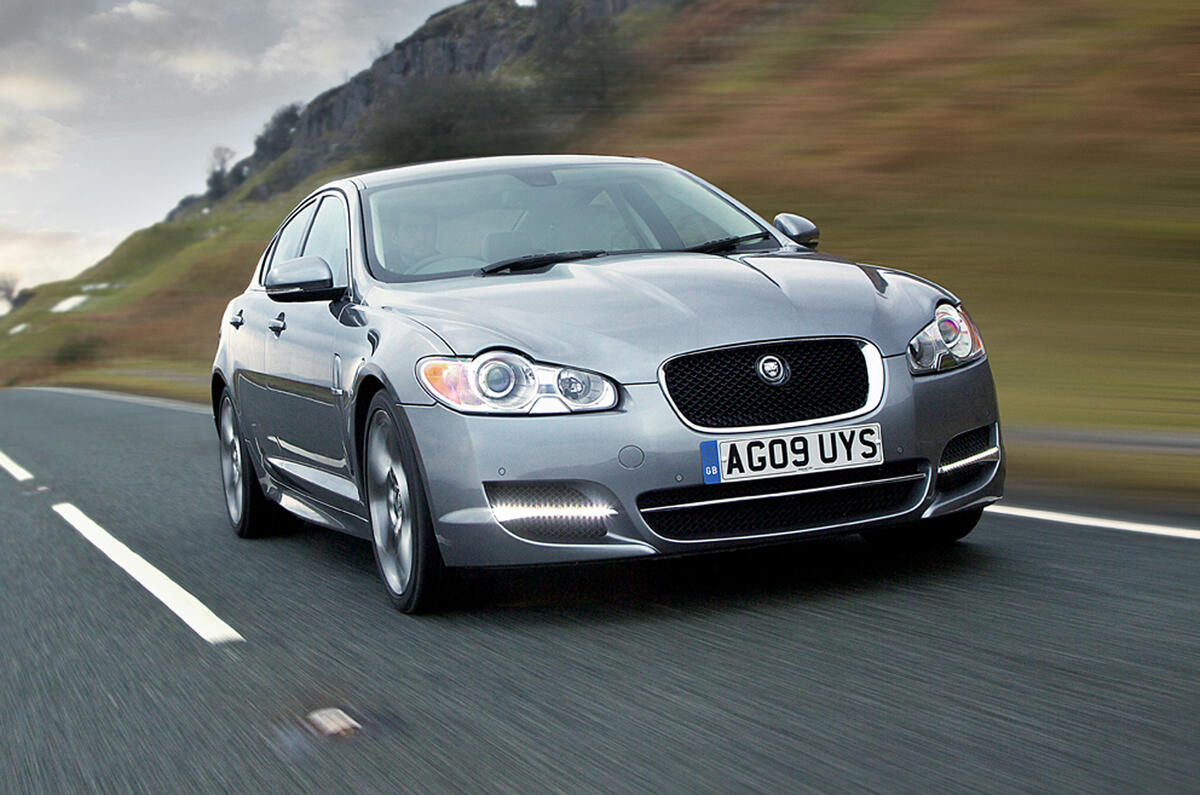A diesel-powered Jaguar XF with CO2 emissions of just 100g/km will be in production by 2020, according to the company’s chief powertrain engineer.
Ron Lee said the plan will involve Jaguar dropping today’s V6 diesel powerplant for a 1.8-litre four-pot producing 240bhp, and driving a nine-speed auto ’box.
Future petrol XFs will get a four-cylinder unit of between 1.5 and 1.8 litres, expected to produce 170bhp per litre.
The cost of producing such engines could mean the 1.8 litre will need to be widely used to achieve economies of scale, and it could end up in Land Rovers.
Lee also revealed that much of the research into the engines will be carried out by Leeds and Loughborough universities.
JLR plans to mix fuel-saving technologies. Lee said that in 2020 over 70 per cent of XF sales could be made up from 100g/km models. Older, large-engined variants and hybrids would make up another 10 per cent each.
To get to the XF of 2020, Jaguar will introduce a new 2.2-litre four-pot diesel with stop-start and an eight-speed auto ’box. This combination will offer the same performance as the original 2.7-litre Jaguar V6 diesel, but with CO2 emissions of 150g/km.
A more efficient 2.0-litre version of this engine is pencilled in for 2016, with an upgraded turbo and low-friction internals. When combined with a new electrical power steering system and a ‘lighter’ XF body, it should emit 130g/km of CO2.
The final move to 100g/km will come in 2020, with the new high-power, 1.8-litre engine.
2020 Jaguar XF tech
Active aerodynamics
Low Cd figures are a must for future cars, so lots of work will go into reducing turbulence around the wheels. Active aerodynamics will involve moving spoilers and diffusers.
Nine-speed auto ’box
The new nine-speed auto could be connected to the car’s cooling system, to help warm the oil more quickly. This would reduce internal friction and load on the engine just after start-up.
Lighter body
Plans for a ‘lighter’ XF in 2016 are still shrouded in secrecy, but this could be the point at which the XF switches to an all-aluminium platform from today’s steel. If not, Jaguar could save weight by fitting all-aluminium doors and an aluminium boot lid.
Quieter drivetrains
“We’ll need to engineer very sophisticated dampers, engine mounts and absorbers for new engines and drivetrains,” said Lee. “We’ll also have to work on sound quality management to make sure the engine sounds good.”





Join the debate
Add your comment
Good choice of engines though
Re: The Jaguar’s XF for 2020
Interesting comments from one of the contributors in Mercedes Enthusiast mag. this month. He concedes the XF is probably the best car in its class. He does qualify it with an 'unfortunately there is no estate and a smaller choice in the range'. Still, high praise I would say.
Re: The Jaguar’s XF for 2020
Just what I was thinking when I looked at the picture at the top of this article.....